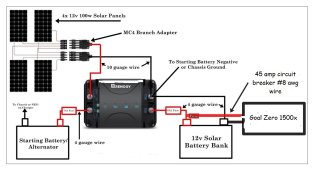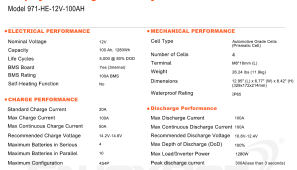philos70
New Member
- Joined
- Dec 25, 2022
- Messages
- 17
Can I connect a 100ah LiFePo4 battery to the Goal Zero Yeti 1500x in parallel without needing anything but a fuse/cb between the two? I'm looking to double my battery capacity without getting rid of the GZ that came with my Scout camper. The GZ can handle 680 watts or 12 v and 50 amps input. I just got the Renogy charger/mppt and will use that regardless to keep the GZ charged with the alternator. I just want more battery capacity.
Do I need a way to step down the charging amperage from the the new 100 ah lithium battery to the goal zero? If so, how?
Or do I not understand what "charging in parallel" means? I've read manufacturers warning not to combine batteries from other sources. I've read DIY people who say as long as you go through x steps you'll be ok.
Thanks for any help offered...
Jeff...
Do I need a way to step down the charging amperage from the the new 100 ah lithium battery to the goal zero? If so, how?
Or do I not understand what "charging in parallel" means? I've read manufacturers warning not to combine batteries from other sources. I've read DIY people who say as long as you go through x steps you'll be ok.
Thanks for any help offered...
Jeff...





